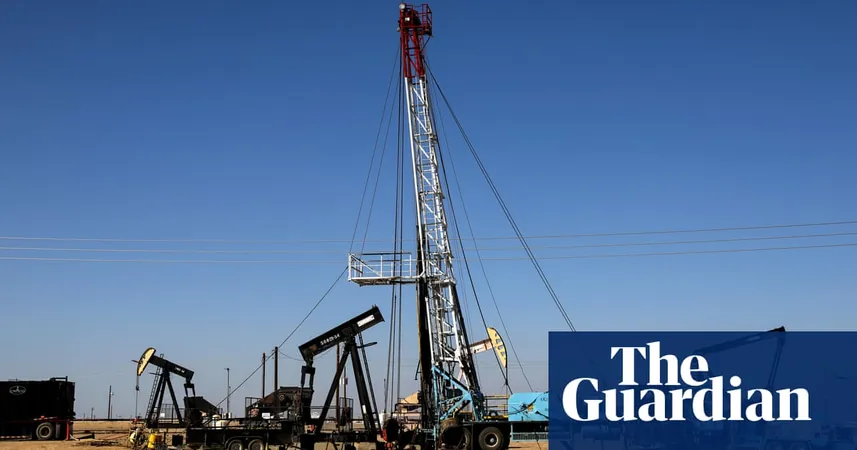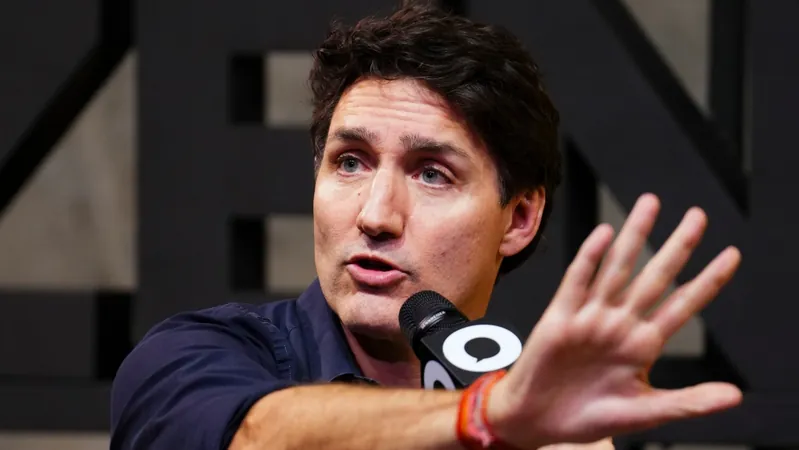
Is Trump’s ‘Drill, Baby, Drill’ Strategy a Mirage? The Truth Behind US Gas Prices
2024-11-19
Author: Jacob
Introduction
In a strikingly bold declaration at the Republican National Convention in July, Donald Trump vowed to lower gas prices through a renewed focus on domestic oil production, rallying supporters with the phrase "We will drill, baby, drill." However, energy analysts suggest that this ambitious pledge may not translate into immediate relief at the pump.
Market Dynamics and Corporate Focus
Despite Trump’s promises, it appears that many oil and gas companies might have other priorities in mind. Over recent years, US energy producers have been tightening their belts, concentrating on cost efficiency rather than ramping up production. The delicate balance between meeting global energy demands and delivering shareholder returns is a tightrope that companies seem reluctant to walk without significant incentives. Analyst Lloyd Byrne from Jefferies notes that there are no signs of a shift in the drilling trajectory dictated by market fundamentals in the near term. Additionally, Darren Woods, the CEO of ExxonMobil, expressed skepticism about how Trump's drilling plan could be enacted as policy. His comments coincide with an urgent call at the recent UN climate summit, where he advocated staying committed to the Paris Climate Agreement.
Current US Oil Production
Currently, the US is the world's top producer of oil and natural gas, churning out approximately 13.4 million barrels per day, and this figure is projected to rise even without new drilling on federal lands. However, there's a catch: US oil companies possess a surplus capacity but have chosen to concentrate on the most productive wells to maximize efficiency and profits.
Cost Efficiency and Profit Maximization
Peter McNally from Third Bridge highlights that inflation pressures in the oil sector are easing, allowing companies to cut costs without jeopardizing production. This strategic rehearsal resulted in higher profitability even as crude prices stagnate. Recent consolidations have left those companies still in operation with stronger financials, giving them the latitude to focus on profits over production, contrary to previous years when they were chastised for reckless output. Interestingly, operational costs for oil companies have plummeted to around $34 per barrel, a far cry from the $68 per barrel price for West Texas Intermediate crude. As McNally observes, there's no compelling reason for producers in prolific areas like Texas and Oklahoma to boost drilling activities, especially given stable future price forecasts.
Historical Context of Oil Production
Looking back to the early 2000s, the oil industry embarked on a production frenzy after hydraulic fracturing emerged, often leading to unsustainable debt levels and financial distress, especially after OPEC flooded the market in the late 2010s, causing prices to hit a low of $26 per barrel in 2016. The pandemic triggered a turning point for the industry, with executives opting for conservatism and a focus on generating free cash flow instead of ramping up production. This newfound restraint appears to be working, as predictions from Tortoise Capital Advisors suggest a modest increase in oil production could occur by 2025—provided companies maintain discipline.
Refinery Constraints
However, even if oil production increases, the ability to convert that supply into affordable gasoline is constrained by refinery capacities. Many refineries have shut down or restructured to produce renewable diesel, which limits their capacity to process the lighter shale oil that has flooded the market. This means that without substantial additional investments to modify equipment, oil refiners may struggle to adjust, potentially leading to increased gasoline prices.
Conclusion
Analysts contend that while refiners may optimize for lighter crude, any major uptick in domestic production might force some of that crude oil to be exported instead, rather than providing significant relief for American consumers at gas stations. In conclusion, while Trump’s “drill, baby, drill” mantra positions itself as a panacea for soaring gas prices, the reality in the market is markedly more complex. Factors such as market conditions, refinery capacities, and shifting corporate priorities indicate that a straightforward solution is far from certain. As the energy landscape evolves, consumers may find themselves grappling with higher prices despite increased domestic production efforts.









 Brasil (PT)
Brasil (PT)
 Canada (EN)
Canada (EN)
 Chile (ES)
Chile (ES)
 España (ES)
España (ES)
 France (FR)
France (FR)
 Hong Kong (EN)
Hong Kong (EN)
 Italia (IT)
Italia (IT)
 日本 (JA)
日本 (JA)
 Magyarország (HU)
Magyarország (HU)
 Norge (NO)
Norge (NO)
 Polska (PL)
Polska (PL)
 Schweiz (DE)
Schweiz (DE)
 Singapore (EN)
Singapore (EN)
 Sverige (SV)
Sverige (SV)
 Suomi (FI)
Suomi (FI)
 Türkiye (TR)
Türkiye (TR)